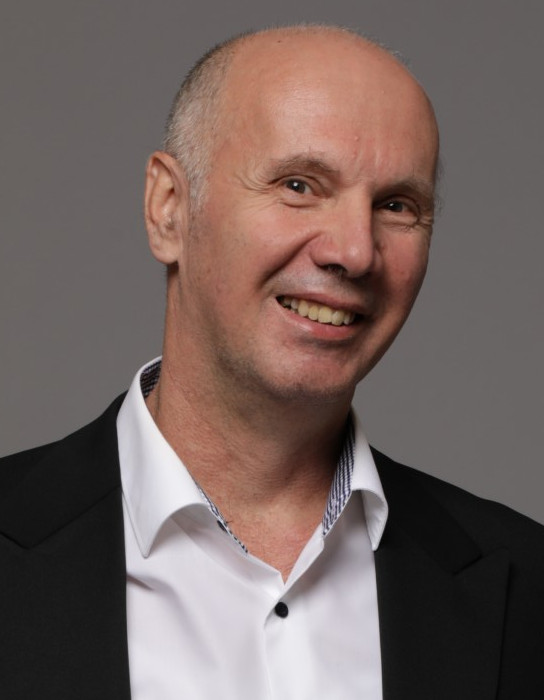Radio-Frequency and Microwave Measurements
Lecturers
Course Description
Study Programmes
University graduate
General Competencies
The course thoroughly explains the differences between measurement techniques and appropriate instrumentation in classic electronic engineering and those in radio-frequency and microwave engineering, caused by complicated electromagnetic phenomena. It is expected that students will develop practical skills for autonomous measurements of all basic quantities needed in everyday engineering practice in the field of radio-frequency and microwave engineering (power measurements of CW and pulsed signal, spectrum measurements, scattering parameters measurement, noise figure measurement).
Learning Outcomes
- Identify the differences between measurements in low-frequency regime and RF and microwave regime.
- Identify the basic measuring quantities in RF and microwave regime
- Explain construction of standard laboratory instruments in RF and microwave regime (power meter, signal generator, scalar and vector analyzer)
- Select appropriate measurement method and measuring instrument for every basic quantity in RF and microwave regime (power, frequency, scattering parameters, spectrum, EM field)
- Identify appropriate connectors, measuring cables and other auxiliary equipment for particular measurement..
- Develop a simple RF (or microwave) measuring system that comprises several standard instruments
Forms of Teaching
Theoretical background of each unit is given in the lectures. This is complemented by in-front-of-class experiments and computer situations that explain physics of particular phenomenon.
Laboratory WorkFour blocks of laboratory exercises. Each exercise is run as a group work of five students.
ExperimentsThere are 12 in-front-of-class experiments that cover whole syllabus. Each experiment is recorded by camera and projected on the screen. Therefore, each student is able to follow the experiment. Each experiment is also complemented by computer simulation, which enables further discussion and analysis.
ConsultationsThere are weekly scheduled consultations with a professor and a teaching assistant. For some special problems, the group consultations are also organized occasionally
Structural ExercisesThere is optional non-compulsary project, in which the students are expected to design and construct small measuring system. This project bears 10 credits. This 10 credits are summed up to other achieved credits. They also can replace 10 credits from any other component.
Grading Method
| Continuous Assessment | Exam | |||||
|---|---|---|---|---|---|---|
| Type | Threshold | Percent of Grade | Threshold | Percent of Grade | ||
| Laboratory Exercises | 0 % | 20 % | 0 % | 20 % | ||
| Class participation | 0 % | 3 % | 0 % | 3 % | ||
| Attendance | 0 % | 2 % | 0 % | 2 % | ||
| Mid Term Exam: Written | 0 % | 10 % | 0 % | |||
| Final Exam: Written | 0 % | 15 % | ||||
| Final Exam: Oral | 50 % | |||||
| Exam: Written | 0 % | 25 % | ||||
| Exam: Oral | 50 % | |||||
Week by Week Schedule
- Introduction - the importance of measurement in the radio-frequency and microwave engineering, examples of everyday engineering problems. Basic measurement quantities in radio-frequency and microwave engineering: power, frequency, scattering parameters, spectrum, noise figure.
- Signal generators, free running generator, dynamic generator, synthesized generator
- RF and microwave digital frequency counter. RF and microwave power measurement, thermistor, bolometer, diode detector. Power measurement of CW, pulsed and modulated signal.
- Laboratory exercise I - power measurement of a laboratory synthesized generator in CW mode and power measurement of a radiocommunication equipment by using bolometer sensor and diode detector.
- Scattering parameters measurement: scalar and vector measurements. Scalar network analyzer and scalar calibration.
- Measurements in radiocommunication systems based on scalar scattering parameters measurement: antenna mismatch, measurement of transfer characteristic of a radiocommunication system
- Laboratory exercise II - measurement of scalar scattering parameters (return loss and insertion loss) of a microwave filter and of a down converter.
- Midterm exam
- Vector network analyzer. Calibration and vector error correction
- Measurement cables, connectors, fixtures, and wafer probes. De-embedding.
- Laboratory exercise III - measurement of transistor scattering parameters and reflection coefficient of the antenna.
- RF and microwave heterodyne spectrum analyzer
- Laboratory exercise IV - measurement of third order intercept point of a microwave amplifier, spectrum measurement, determining modulation parameters
- Laboratory noise sources, Y method for noise measurement, noise figure meter
- Final exam


 Pristupačnost
Pristupačnost